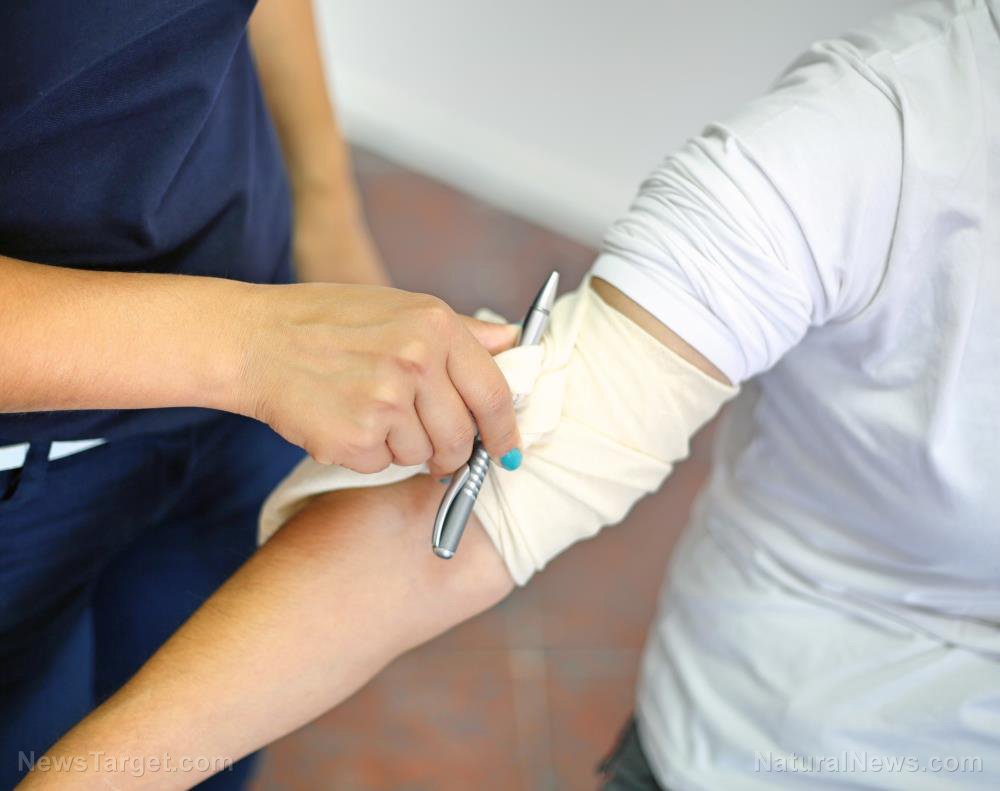First aid tips for preppers: How to treat common injuries when SHTF
10/10/2019 / By Zoey Sky

A first aid kit is an essential item both for regular days and an emergency. Should you lose your first aid kit, would you know how to prepare an improvised one? (h/t to TheRealSurvivalists.com)
If someone gets hurt in an emergency, a prepper must stay calm and look for makeshift tools for an improvised medical kit. These tools will include common items found around you, such as:
- Safety pins
- Scissors
- Small water bottle filled with clean water – For rinsing wounds.
- Toilet paper – Use several squares to make a “plug” for nosebleeds.
- T-shirt bandages – Cut up a clean shirt to make bandages.
- Tweezers
The ABC rule for unconscious victims
Before you try to help an injured person, make sure that you won’t get hurt in the process. If there is an immediate danger to the casualty, move him first to a safe place.
Raise the alarm immediately to let others know that you may need help administering first aid. Once you and the patient are safe, confirm the extent of possible injuries.
If the casualty is unresponsive, follow the ABC rule:
- A (Airways) – Can the patient breathe? Check for signs of airway obstruction, like the tongue or an object in the mouth or throat. Clear away the obstruction as soon as possible.
- B (Breathing) – Is the casualty having trouble breathing? Begin CPR if the patient is unresponsive.
- C (Circulation) – If the casualty has stopped breathing, chest compressions, a part of CPR, will help maintain blood circulation to the brain and vital organs.
Bleeding
Follow the ABC rule with first aid for addressing bleeding.

When helping a patient who is bleeding profusely, use a clean piece of clothing like a shirt. Most shirts are made of very absorbent material and are flexible enough to apply to a wound.
Shirts can also be ripped by hand or cut using scissors. Clean tea towels are also great substitutes for bandages. (Related: Prepping basics: Tips for building a pocket survival kit.)
You may need an improvised tourniquet to stem bleeding from a severe wound. Use alternatives like bag straps, belts, bras, shoelaces, or strips of clothing or rope.
Learn how to apply a tourniquet properly to avoid the dangers linked to its use.
Use your hands as a last resort. Clean your hands and cover as much of the wound as you can. Apply maximum pressure and get assistance ASAP.
Burns
To address a burn, cool down the injured area first, then cover it to prevent infection.
Run cold water on the burn. If you don’t have water, use other cold, non-dangerous liquids as a last resort. The idea is to simply let the area cool down, especially if the patient has just burned himself. For best results, cool the burn for at least 10 ten minutes.
Household clingfilm can be used to cover the burn, or use a clean plastic carrier bag or other kinds of clean plastic film. Plastic is the best material to use because it won’t stick to the burn.
Broken bones
A patient may have broken bones even if he isn’t visibly bleeding. If the casualty is bleeding, stop the bleeding first before checking for broken bones.
If the patient isn’t bleeding, immobilize and support any broken bones. You can use an improvised splint for this. Note that this may not apply to a complex break.
When applying first aid outdoors, use sturdy, straight sticks, a blanket, and a belt or bag straps for the broken arm or leg.
When treating a smaller break like a broken wrist at home or your workplace, you can use an improvised splint made from corrugated cardboard, kitchen utensils, a ruler or a long, flat item.
Secure the splint and wrap the break with a clean shirt or tea towel. Use cordage or sticky tape to keep everything in place. Try not to apply tape directly on the skin which can hurt the patient when removed.
Head injury or swelling
Create a cold compress using a clean tea towel or shirt wrapped around ice cubes. Apply the cold compress to the injured area.
Other cold compress alternatives include frozen peas or other frozen vegetables. If you don’t have access to frozen food, use a clean piece of clothing soaked in cold water then wrung out.
Shocks
A person with any of the injuries detailed above may experience shock.
Shock can aggravate his condition, and it can become life-threatening if not addressed immediately.
Shock occurs due to a sudden drop in blood flow throughout the body. The cells of a person suffering from shock aren’t receiving enough oxygen to work properly and this can damage vital organs such as the brain and heart.
Signs of shock include:
- Cold, clammy skin
- Confusion
- Fast, shallow breathing
- Fast, weak pulse
- Pallor/paleness in the face
- Sighing or yawning
- Loss of response in extreme cases
Treat shock by helping the patient lie down. Keep his head low and legs raised and supported. This will increase blood flow to his head. Don’t raise an injured leg.
Call for medical help. Keep the patient calm, comfortable, and warm while waiting for help to arrive. Cover him with a blanket or coat.
Check his breathing, pulse, and level of response regularly. Follow the ABC rule if the patient loses consciousness.
When assisting a casualty after disaster strikes, keep your cool and look for improvised medical tools to treat any injuries.
Sources include:
Submit a correction >>
Tagged Under:
bleeding, broken bones, Burns, disaster, DIY, emergency, first aid, first-aid kit, head injury, how-to, injuries, loss of consciousness, medical kit, off grid, outdoors, preparedness, prepper, prepping, remedies, self-reliance, shock, SHTF, survival, Survival Tips, survival tools, wilderness survival, wounds
This article may contain statements that reflect the opinion of the author





















